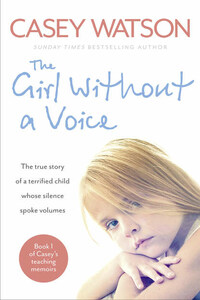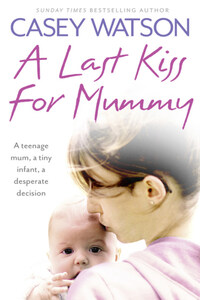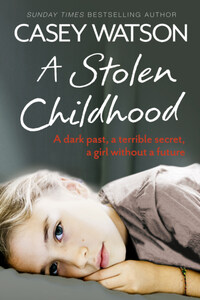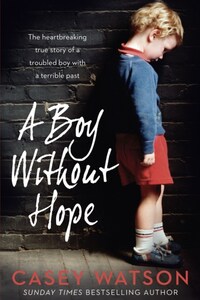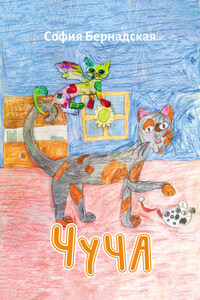This book is a work of non-fiction based on the author’s experiences. In order to protect privacy, names, identifying characteristics, dialogue and details have been changed or reconstructed.
HarperElement
An imprint of HarperCollinsPublishers
1 London Bridge Street
London SE1 9GF
www.harpercollins.co.uk
and HarperElement are trademarks of
HarperCollinsPublishers Ltd
First published by HarperElement 2014
FIRST EDITION
© Casey Watson 2014
A catalogue record for this book is
available from the British Library
Cover layout design © HarperCollinsPublishers 2014
Cover photograph © Mary Schannen/Trevillion Images (posed by a model)
Casey Watson asserts the moral right to
be identified as the author of this work
All rights reserved under International and Pan-American Copyright Conventions. By payment of the required fees, you have been granted the non-exclusive, non-transferable right to access and read the text of this ebook on-screen. No part of this text may be reproduced, transmitted, down-loaded, decompiled, reverse engineered, or stored in or introduced into any information storage and retrieval system, in any form or by any means, whether electronic or mechanical, now known or hereinafter invented, without the express written permission of HarperCollins ebooks.
Find out about HarperCollins and the environment at
www.harpercollins.co.uk/green
Source ISBN: 9780007510696
Ebook Edition © June 2014 ISBN: 9780007518159
Version 2016-10-19
There are jobs and there are jobs, and my perfect kind of job has always been the kind where you wake up Monday morning with no idea what the week might have in store.
Which was exactly the kind of job I did have, so it was definitely a blessing that my home life was, in contrast, so predictable.
‘Mu-um!’ came my daughter’s plaintive voice from upstairs. ‘I can’t find my other black shoe! I have five minutes to get out of the door and I can’t find it anywhere! Have you seen it? Someone’s obviously moved it!’
I shook my head and sighed. That was typical of Riley. She was 18 now and we were so alike, in so many ways. Same black hair, same laugh, same taste in music and fashion. But in one important respect we were different. Where it was my life’s mission to try and make the world a tidier place, Riley was the opposite: she was just about the most disorganised person I knew. I knew where her shoe would be. It would, same as ever, be in exactly the same place as it landed when she last flung it off.
I headed upstairs anyway, however, because I had the luxury of an hour till I needed to leave for work, whereas she really did only have five – no, four – minutes. She’d secured a great job after leaving college, and she was really enjoying it. She worked in a travel agents, which she said gave her ‘that holiday feeling every day’. But it wasn’t a holiday – there was an end time and, more pertinently, a start time. Just as well she had such an understanding boss.
I was halfway up the stairs when she appeared on the landing. ‘It’s okay,’ she said, hopping as she pulled the errant shoe on to her foot. ‘Panic over. Someone must have kicked it under my bed.’
‘Er, excuse me?’ I chided, as she came down to join me. ‘Someone? Which someone might that be?’
In answer she planted a quick kiss on my cheek, then she was out of the door to catch her bus with only seconds to spare. I waved her off, thinking wistfully of how it might feel to be 18 again, off to work without a care in the world.
The children in my own world were different. Well, the ones I spent my weekdays with, at any rate. I worked as a behaviour manager in a big inner-city comprehensive school, so the kids that came my way were the opposite of carefree. They came to spend time with me for a variety of different reasons, but what they had in common was that they couldn’t cope in a mainstream school setting. My job, as well as providing a safe space in which they could work, was to assess them and decide upon the best course of action, which could involve counselling them, teaching them coping techniques and/or, in some cases, referral to outside agencies that could help them, such as professional counsellors and clinical psychologists. Sometimes it could be as simple as formulating a temporary alternative curriculum, and other times it could end up being protracted and complex – where a child’s difficulties were too severe to be dealt with using mainstream school facilities, for example, it might mean a transfer to a live-in establishment that had the staff and facilities appropriate to their needs. And in extreme cases, where the children were deemed to be at risk at home, social services might be brought in and the child placed in care.
